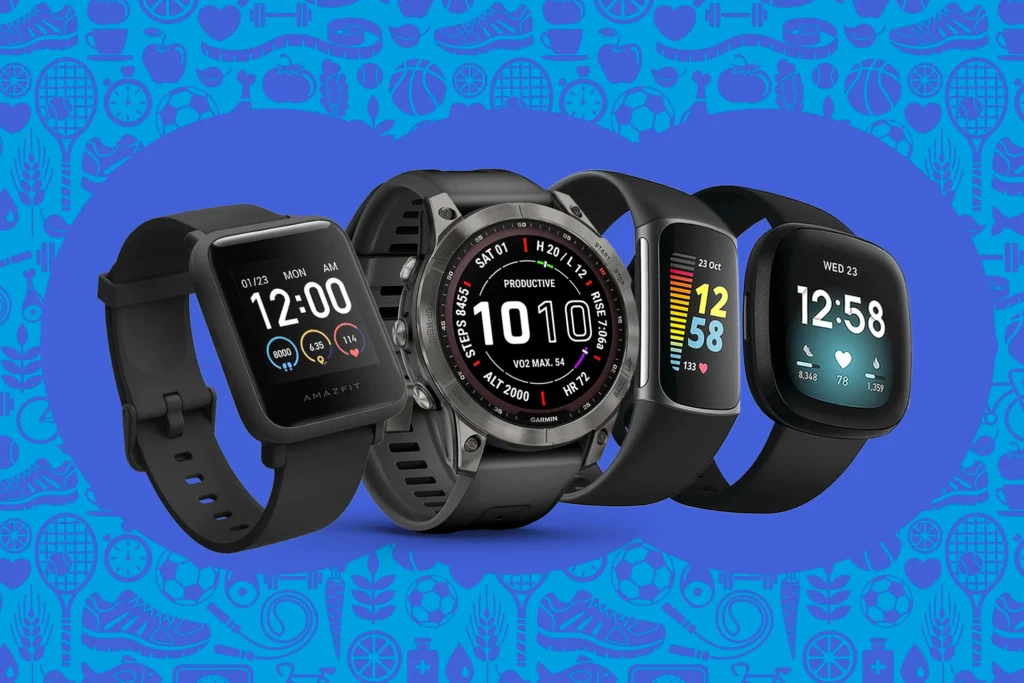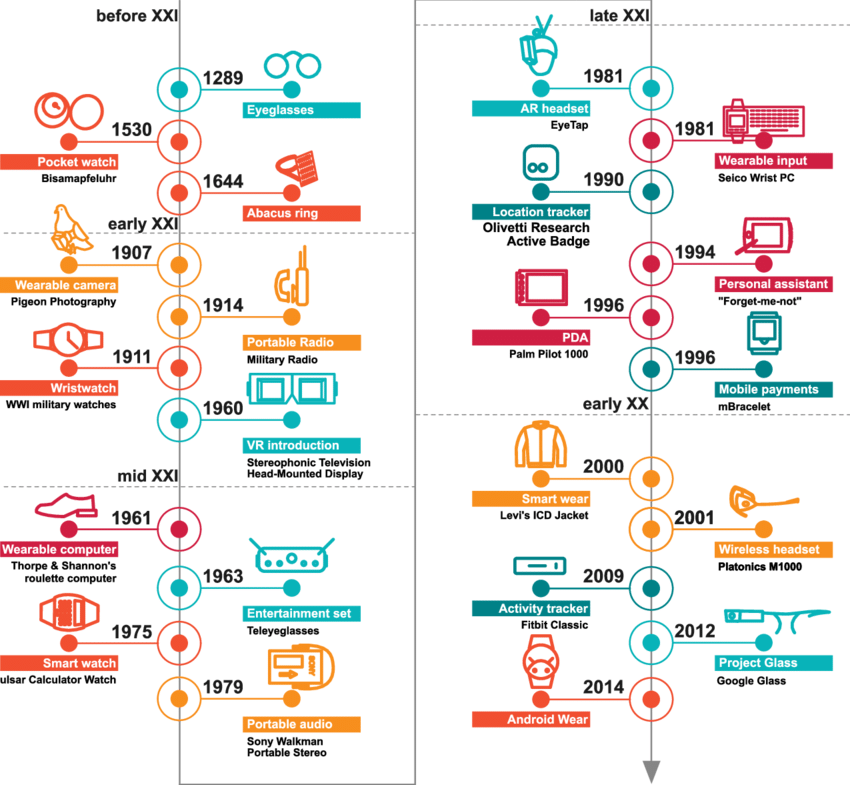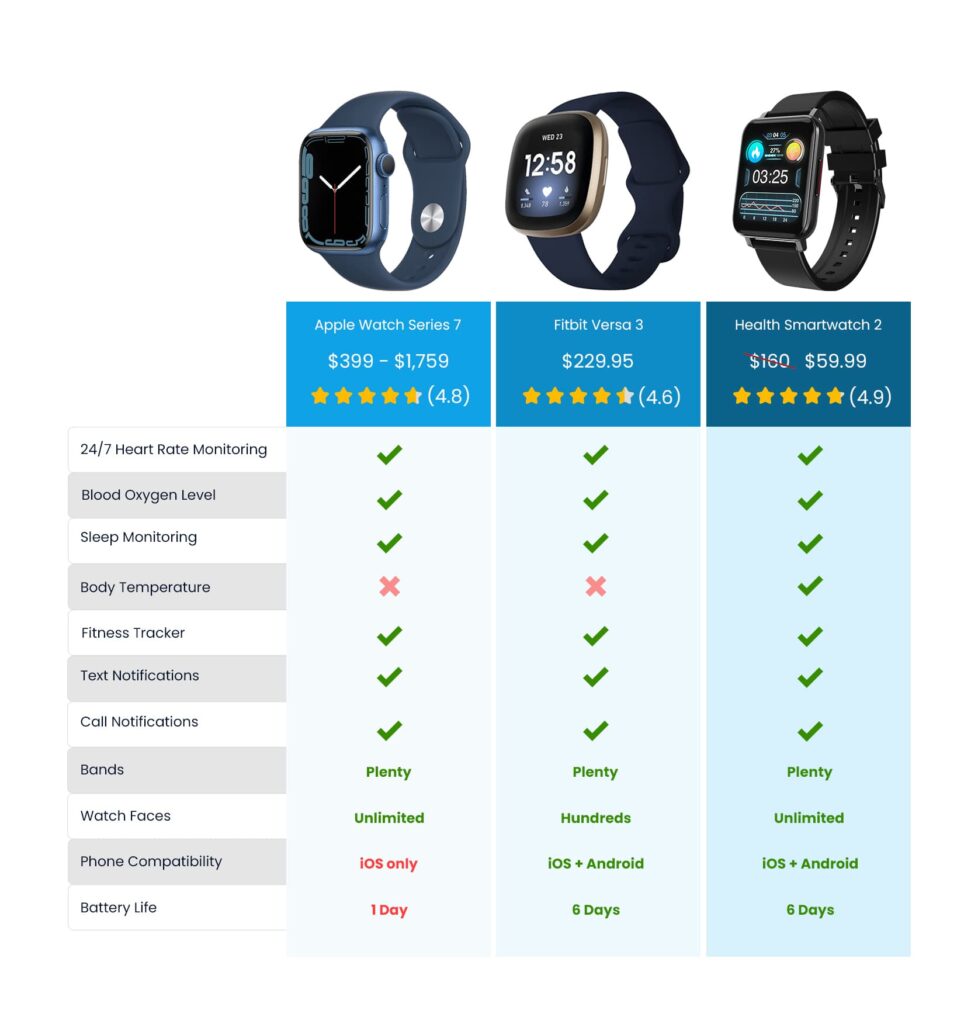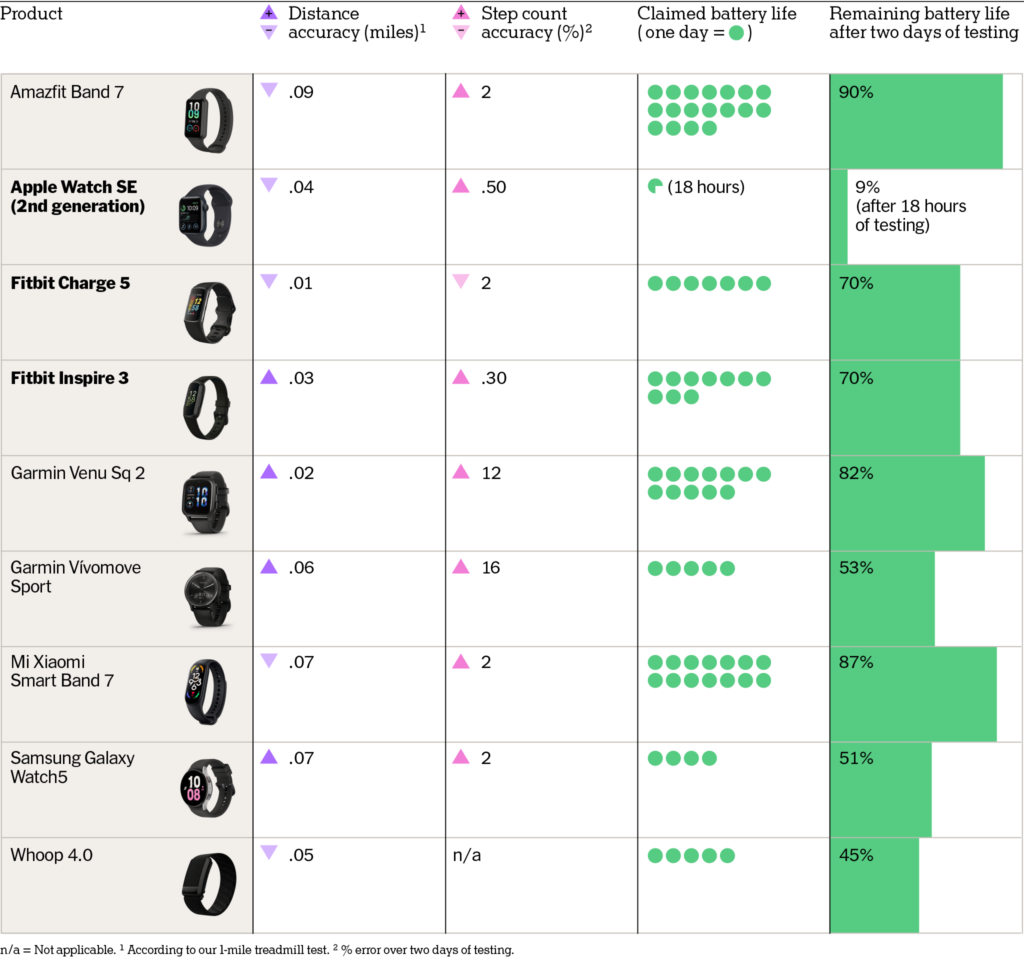
In today’s fast-paced world of wearable tech, the debate of fitness tracker vs. smartwatch is hotter than ever. Whether you’re a fitness enthusiast or just curious about wearable gadgets, the choice can be confusing. Let’s dive in and explore every nook and cranny of these devices—mixing solid research, expert opinions, and even a few quirky real-life stories. By the end of this article, you’ll have a crystal-clear picture of which wearable suits your lifestyle best.
1. A Brief History & Evolution of Wearable Technology
Wearable tech has come a long way since those clunky pedometers of the past. Over the last decade, both fitness trackers and smartwatches have undergone revolutionary changes, with each generation packing more features, improved accuracy, and even a bit of style flair.
Back in the early 2000s, devices primarily measured basic activity metrics like steps and distance. Fast forward to 2023-2025, and we’ve seen the integration of advanced sensors, heart rate variability monitoring, blood oxygen measurement, and even electrocardiogram (ECG) capabilities. This evolution is well-documented in journals like IEEE Spectrum and Nature Digital Medicine, where researchers highlight the steady convergence of healthcare and technology.
Here’s the kicker: the fitness tracker vs. smartwatch debate isn’t just about gadgets—it’s about how these devices empower us to lead healthier lives.
Milestones in Wearable Tech
Early Beginnings: Basic step counters and heart rate monitors.
Mid-2010s: Introduction of advanced sensors and sleep tracking.
2020 Onwards: Integration with AI, machine learning, and real-time health monitoring.
2023-2025: Data-driven insights from leading research institutions and tech giants have made wearables indispensable in personalized healthcare.

2. Understanding the Basics: Fitness Trackers vs. Smartwatches
When comparing fitness tracker vs. smartwatch, it’s crucial to understand what sets these devices apart. At their core, both wearables aim to keep tabs on your health, but they do so with varying levels of sophistication and additional functionalities.
Fitness Trackers: Focused on Activity and Health
Fitness trackers are primarily designed to monitor physical activities and basic health metrics. They tend to be lightweight, feature minimalistic designs, and have longer battery lives compared to their smartwatch counterparts. Here are some standout features:
Activity Monitoring: Steps, calories burned, distance traveled, and active minutes.
Sleep Analysis: Tracking sleep duration and quality.
Heart Rate Monitoring: Continuous heart rate tracking for basic health insights.
User-Friendly: Often come with simplified interfaces ideal for quick glances during a workout.
A notable example is the Fitbit series, which has been a favorite for millions globally. According to a 2023 report by Statista, fitness trackers now account for nearly 45% of the wearable tech market share—a figure that’s expected to grow steadily.
Smartwatches: The Multifunctional Marvels
Smartwatches, on the other hand, are like mini smartphones on your wrist. They offer a broader array of functions beyond basic fitness tracking. Some key features include:
App Ecosystem: Access to a wide range of applications—from messaging to navigation.
Advanced Health Monitoring: Features like ECG, blood oxygen levels, and even stress tracking.
Connectivity: Seamless integration with smartphones for calls, notifications, and music control.
Customization: More options for watch faces, straps, and overall design.
Apple Watch and Samsung Galaxy Watch are prime examples that have set high standards in terms of performance and usability. Research from Gartner indicates that smartwatches are increasingly being seen as essential tools not only for health but also for productivity and connectivity.

3. Diving into the Data: What Recent Research Tells Us
To get a clear picture of the fitness tracker vs. smartwatch debate, let’s dig into some research findings and expert opinions from the past few years. It’s fascinating how data can illuminate the differences between these two types of wearables.
Health Monitoring Capabilities
A recent study published in IEEE Xplore highlighted that advanced smartwatches are now capable of providing accurate ECG readings and blood oxygen levels, which are particularly useful for early detection of cardiovascular issues. In contrast, while fitness trackers are excellent at monitoring general activity, they usually lack the depth of diagnostic tools available in smartwatches.
Battery Life and Usability
Battery life remains a significant differentiator. Fitness trackers generally last a week or more on a single charge, whereas smartwatches might require charging every day, especially with heavy usage of apps and notifications. A comprehensive analysis by Nature Digital Medicine reported that nearly 60% of smartwatch users found battery life to be a limiting factor in their daily use, suggesting that the simpler design of fitness trackers could be more appealing for users prioritizing longevity.
User Satisfaction and Behavioral Impact
Data from surveys conducted by Statista in 2023 revealed that users of fitness trackers were 20% more likely to maintain consistent physical activity routines compared to smartwatch users. This trend is attributed to the simplicity and focus of fitness trackers, which avoid the distractions that often come with smartwatches.
Expert Insights
Dr. Emily Stanton, a leading researcher in wearable technology from MIT Tech Review, commented:
“The evolution of wearable devices has been remarkable. While smartwatches offer a plethora of functions, the focused design of fitness trackers makes them exceptionally useful for those whose primary goal is improving physical health.”
Similarly, tech analyst John Rivera noted, “For many users, the choice between a fitness tracker vs. smartwatch boils down to lifestyle and specific health goals. If you’re looking for deep health insights without the fuss, a fitness tracker might just be your best bet.”

4. Real-World Case Studies: Wearables in Action
Nothing speaks louder than real-life examples. Let’s take a look at some compelling case studies that illustrate the impact of both fitness trackers and smartwatches.
Case Study 1: Transforming Corporate Wellness
A startup in Berlin recently discovered that introducing fitness trackers to their workforce increased daily activity by 35% over six months. Employees reported feeling more energetic and connected, which boosted overall productivity. The company integrated the trackers with a custom-built wellness app that offered daily step challenges and sleep quality insights. This case highlights how a simple device can foster healthier habits in a corporate setting.
Case Study 2: Advanced Health Monitoring in Senior Care
In a recent initiative in Japan, a group of healthcare providers introduced smartwatches equipped with advanced monitoring features to senior citizens. These smartwatches continuously tracked heart rhythms and detected falls, alerting caregivers immediately. This proactive approach led to a 30% reduction in emergency incidents among the elderly, as detailed in a report by Gartner. The incident underscores the value of smartwatches in healthcare scenarios where timely intervention can save lives.
Case Study 3: Fitness Trackers Fueling Athletic Performance
Consider the story of an amateur marathon runner from Boston who switched from a smartwatch to a dedicated fitness tracker. Despite initial skepticism, she noted a remarkable improvement in her training efficiency. The fitness tracker’s detailed activity logs and minimal distractions allowed her to focus solely on optimizing her performance. Over time, she shaved 15 minutes off her marathon time, proving that sometimes, less really is more.
5. Feature-by-Feature Comparison: What to Consider
When choosing between a fitness tracker and a smartwatch, it helps to break down the features. Let’s examine several key aspects side-by-side:
Design and Comfort
Fitness Trackers:
Sleek, minimalistic designs.
Lightweight with flexible bands for all-day wear.
Often water-resistant, ideal for continuous activity tracking.
Smartwatches:
More substantial builds, combining style with function.
Customizable watch faces and straps.
Often heavier, which might be a consideration for long-term comfort.
Health & Activity Monitoring
Fitness Trackers:
Track steps, calories, and sleep patterns.
Basic heart rate monitoring with sufficient accuracy for everyday use.
Ideal for users who prefer straightforward data without additional tech distractions.
Smartwatches:
Advanced sensors for ECG, blood oxygen levels, and even stress monitoring.
Integration with health apps to provide personalized insights.
Better suited for users requiring a broader health picture and additional functionalities.
Battery Life
Fitness Trackers:
Typically boast longer battery life, often lasting a week or more.
Minimalistic display and fewer apps contribute to extended usage.
Smartwatches:
More power-hungry due to larger displays and constant notifications.
May require daily charging, especially when using health apps intensively.
Connectivity and App Ecosystem
Fitness Trackers:
Offer essential connectivity with smartphone apps.
Focus on data synchronization and basic notifications.
Often simpler software that’s less prone to distractions.
Smartwatches:
Provide a full suite of apps, including messaging, email, and navigation.
Deeper integration with smartphones, supporting voice commands and mobile payments.
More customization options, which can be both a boon and a distraction.
Price and Value for Money
Fitness Trackers:
Generally more affordable, making them a popular choice for budget-conscious consumers.
Provide excellent value for those primarily interested in activity tracking.
Smartwatches:
Price points can vary widely, from mid-range to premium models.
Offer a richer feature set that justifies the higher cost for tech enthusiasts and professionals.
Quick Bullet Summary:
Fitness Trackers: Focused on health data, longer battery life, affordable.
Smartwatches: Multifunctional, advanced health monitoring, more connectivity, customizable but may need frequent charging.
6. Who Should Choose What? Tailoring to Your Lifestyle
Let’s be real—no single wearable fits everyone perfectly. Your choice between a fitness tracker vs. smartwatch largely depends on your daily needs, lifestyle, and priorities.
For the Fitness Fanatics
If your main focus is on tracking workouts, steps, and sleep patterns without extra frills, a fitness tracker is a solid bet. They’re built for endurance, often boasting simpler interfaces that let you quickly gauge your performance without getting bogged down by notifications. This simplicity can be especially appealing if you’re training for a marathon or trying to build a consistent exercise habit.
For the Tech-Savvy Multitaskers
Smartwatches are perfect for those who want a device that does it all. They’re ideal if you need access to notifications, apps, and even advanced health monitoring—all from your wrist. Imagine receiving an urgent email, tracking your heart rate during a workout, and making a quick call without fumbling for your phone. That’s the appeal of smartwatches. They offer an integrated ecosystem that bridges both fitness and connectivity.
Considerations for Seniors and Health-Conscious Users
For older adults or individuals with specific health concerns, smartwatches with advanced features like fall detection and ECG monitoring can be life-changing. Several studies, including those from WHO and Gartner, have emphasized the importance of continuous health monitoring in preventing emergencies.
A Few Thought-Provoking Questions
Are you looking for a device that motivates you to move without overwhelming you with notifications?
Would you prefer a gadget that doubles as an extension of your smartphone, or do you value simplicity over multifunctionality?

7. Future Trends and Innovations in Wearable Tech
The wearable tech landscape is evolving rapidly. With ongoing research and development, the line between fitness trackers and smartwatches continues to blur. Here are a few trends to watch out for:
Enhanced Health Monitoring
In the next few years, expect to see even more advanced health metrics integrated into wearables. Upcoming devices may offer non-invasive blood sugar monitoring, hydration level tracking, and even more accurate sleep stage analysis. Innovations like these are already in development, with early data presented at IEEE conferences and in Nature Digital Medicine.
Integration with AI and Machine Learning
Artificial intelligence is set to play a major role in personalizing health insights. Imagine your wearable not just recording data, but also analyzing it to predict potential health issues or optimize your workout routines. AI-powered insights will likely become a standard feature, making the fitness tracker vs. smartwatch debate even more nuanced.
Expanded Ecosystem and Interoperability
Wearables are increasingly becoming central hubs in the Internet of Things (IoT). Future devices will likely offer seamless integration with home automation systems, smart gym equipment, and even telemedicine platforms. This expansion means that the choice between a fitness tracker and a smartwatch might eventually become a matter of personal preference rather than distinct functionalities.
Sustainability and Design Innovations
With growing consumer interest in sustainability, manufacturers are exploring eco-friendly materials and energy-efficient designs. Expect future wearables to not only offer cutting-edge technology but also contribute to reducing electronic waste.
8. Conclusion: Which One is Right for You?
So, where does this leave us in the age-old fitness tracker vs. smartwatch debate? Ultimately, the best wearable for you hinges on your lifestyle, priorities, and health goals. If you’re after a device that offers simple, effective health tracking without the fuss, a fitness tracker could be your ideal companion. On the other hand, if you want a multifunctional device that integrates deep health insights with smart connectivity features, then a smartwatch might just be worth the extra investment.
Remember, no matter which path you choose, both types of wearables are designed to empower you to live a healthier, more connected life. It’s all about aligning your tech with your goals—whether that means hitting your daily step target or staying in touch on the go.
Before making a decision, consider trying out different models, reading user reviews, and even consulting with a tech specialist if you’re unsure. And hey, sometimes the best way to decide is simply to test the waters!
Subscribe for weekly tech insights and more engaging content on wearable tech trends.
Final Thoughts
The conversation surrounding fitness tracker vs. smartwatch isn’t just about technology—it’s about enhancing our everyday lives through smarter health decisions. With a wide range of options available, the ultimate choice depends on whether you crave simplicity and long battery life or a multi-functional gadget that keeps you connected at all times.
As we continue to witness rapid advancements in wearable tech, staying informed and updated with the latest research and trends is key. Don’t hesitate to explore further, experiment with different models, and most importantly, listen to your body and your tech needs.
Remember, every step you take—literally and figuratively—brings you closer to a healthier lifestyle. So, go ahead and make an informed decision that best suits your unique journey.
Thanks for reading, and here’s to making smart choices in the world of wearable technology!
Enjoyed this deep dive into wearable tech? Subscribe now for weekly insights, tips, and the latest trends delivered straight to your inbox!


